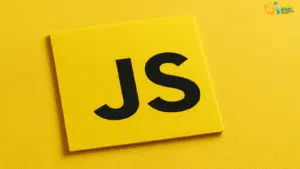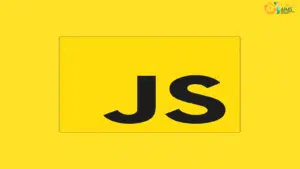JavaScript Mastery
Introduction to JavaScript
JavaScript is a high-level, dynamic programming language that plays a pivotal role in web development. Originally developed by Brendan Eich in 1995 under the name Mocha, it was later renamed JavaScript, with the goal of creating interactive web pages.
Over the years, JavaScript has evolved significantly—from a simple scripting language into the backbone of modern web interfaces. Its importance in building dynamic web applications is undeniable, enabling developers to implement complex features such as interactive forms, animations, and real-time updates without reloading pages.

What Is JavaScript?
JavaScript is a high-level programming language primarily used in web development to make pages interactive and dynamic. It first appeared in 1995, created by Brendan Eich while working at Netscape, and has since become one of the most important programming languages in the world.
JavaScript is part of the “golden trio” of web development:
- HTML for structure
- CSS for styling
- JavaScript for interactivity
It runs on the client side, allowing code execution directly inside web browsers. This capability leads to more responsive user experiences. By manipulating HTML and CSS, JavaScript transforms static content into engaging and interactive websites.
Its importance lies in being the only programming language supported natively by all major browsers, making it a universal tool for front-end development.
Moreover, JavaScript has adapted to developers’ evolving needs through a wide variety of libraries and frameworks such as React, Angular, and Vue.js. These tools simplify development and enable the creation of responsive single-page applications (SPAs) with less effort. With the rise of Node.js, JavaScript extended its reach to server-side programming, offering a unified environment across both client and server.
In short, JavaScript’s unique features and versatility make it an essential tool for every web developer. Mastering it is critical for creating interactive, user-friendly applications that shape today’s modern web.
Benefits of JavaScript
- Adds interactivity to websites: dropdown menus, dynamic forms, alerts.
- Works on both front-end and back-end (thanks to Node.js).
- Wide browser support: built into Chrome, Firefox, Safari, Edge, and others.
- Faster development with frameworks like React, Angular, and Vue.
- Huge community with countless open-source libraries and ready-made solutions.
Features of JavaScript
- Easy to learn: simple syntax, beginner-friendly.
- Dynamic typing: no need to declare data types.
- Supports OOP and functional programming styles.
- Strong integration with HTML and CSS, making it perfect for web development.
- Versatile: used in web apps, mobile apps (Ionic, React Native), AI, and games.
- Constantly updated through annual ECMAScript (ES) standards.
How JavaScript Works
In the Browser
You can write JavaScript code inside an HTML file using the <script> tag.
Example:
<html>
<body>
<button onclick="alert('Hello!')">Click Here</button>
</body>
<script>
console.log("Hello from JavaScript!");
</script>
</html>
On the Server (Node.js)
Installing Node.js allows JavaScript to run on the terminal.
Example:
console.log("Hello from Node.js");
With Libraries & Frameworks
- React.js: for building user interfaces.
- Angular: for large, complex applications.
- jQuery: once very popular for DOM manipulation.

Getting Started with JavaScript
To begin learning JavaScript, follow these steps:
- Choose a text editor or IDE
Popular options: Visual Studio Code, Sublime Text, Atom. These offer syntax highlighting, extensions, and ease of use. - Set up a local server
While JavaScript runs in the browser, using tools like XAMPP or WAMP helps simulate a real server environment and test apps more accurately. - Use a modern browser with developer tools
Chrome and Firefox include built-in dev tools for inspecting elements, debugging code, and viewing console outputs. - Write your first script
Create a.jsfile and add:console.log('Hello, World!');Run it in the browser console or through Node.js.
This is your first step into the vast world of JavaScript, preparing you for more advanced concepts and practices.
Practical Applications of JavaScript
- Interactive websites: sliders, single-page apps (SPAs).
- Games: 2D/3D games using frameworks like Phaser or Three.js.
- Artificial intelligence: via libraries like TensorFlow.js.
- Mobile apps: with React Native or Ionic.
- Full-stack development: React (front-end) + Node.js/Express (back-end).
Understanding JavaScript Fundamentals
JavaScript is versatile and forms the foundation of modern web development. Mastering its basics is crucial for creating dynamic websites and apps.
Core Concepts:
- Data types:
- Primitives: numbers, strings, booleans, undefined, null.
- Non-primitives: objects, arrays.
- Dynamic typing: variables can hold any data type without explicit type declaration.
- Declared with
let,const, orvar(withletandconstbeing preferred).
- Declared with
- Operators:
- Arithmetic, relational, logical, assignment.
- Example: arithmetic operators perform math; relational operators compare values and return a boolean.
Conclusion
JavaScript is no longer “just a browser language”—it has become a universal language enabling developers to build everything from simple websites to advanced systems.
Its ease of learning, flexibility, and massive community support make it the number-one choice for anyone entering the world of modern programming.



No comment